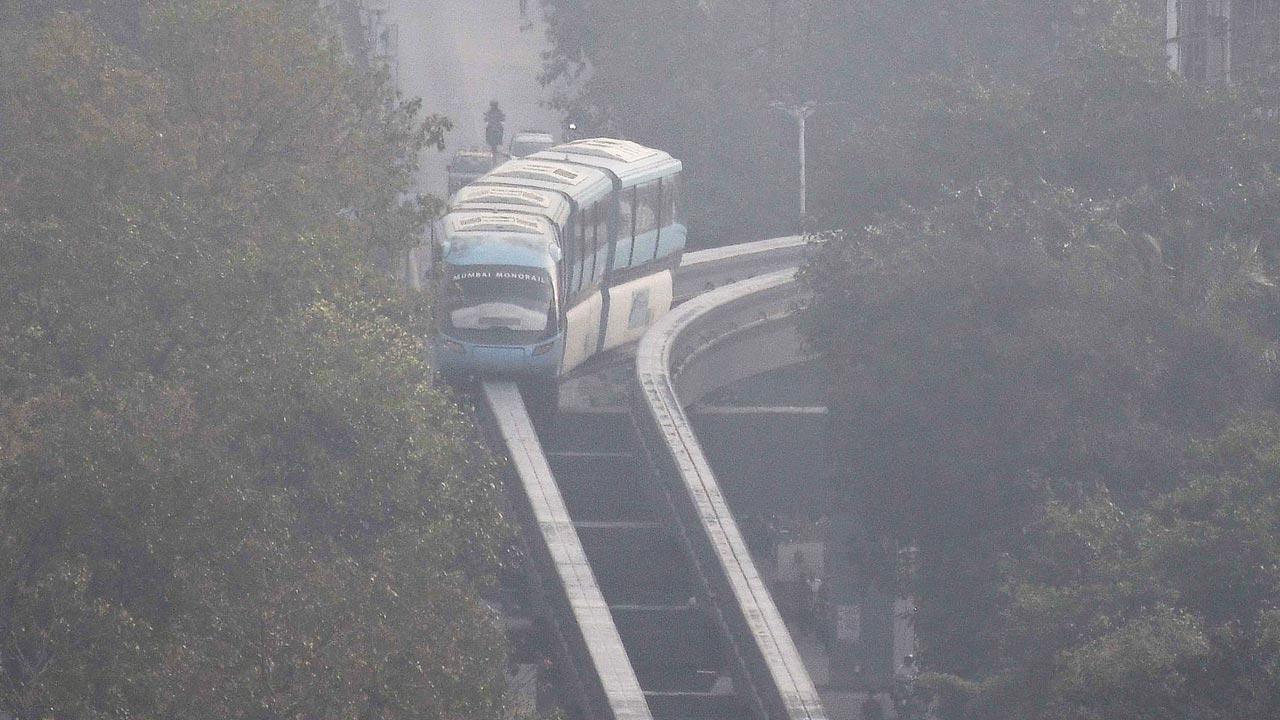If Maharashtra does not reduce the thermal power plants and act on other sources of aerosol, the contamination could enter red zone, says a study

High levels of aerosol contaminants cause asthma and bronchitis, say doctors. File pic/Ashish Raje
Every year, studies are published, highlighting the contaminants in the air and how they clog our lungs. However, according to a latest study, aerosol pollution in Maharashtra is anticipated to move from its current ‘vulnerable’ orange zone to the ‘highly vulnerable’ red zone in 2023. It has attributed the probable rise to majorly thermal power plants.
ADVERTISEMENT
The study: ‘A deep insight into state-level aerosol pollution in India’, by researchers Dr Abhijit Chatterjee and his PhD scholar Monami Dutta from Bose Institute in Kolkata, was published in the peer-reviewed journal Elsevier (an academic publishing company that publishes medical and scientific literature) in August.
Also read: 'Bharat Jodo Yatra' enters Maha; Rahul to address rallies on November 10 and 18
The contamination is measured on the aerosol optical depth (AOD) scale, which ranges from 0 and 1. While 0 indicates a crystal-clear sky with maximum visibility, 1 indicates very hazy conditions. An AOD of less than 0.3 denotes green zone (safe), 0.3-0.4 is blue zone (less vulnerable), 0.4-0.5 is orange (vulnerable) and over 0.5 is the red zone (highly vulnerable).
What is AOD?
AOD is the quantitative estimate of the aerosol present in the atmosphere and can be used as a proxy measurement of PM2.5.
Maharashtra currently falls under the orange category. However, rising aerosol pollution is expected to push the AOD much higher than 0.5.
The study identified the primary sources of aerosol pollution in Maharashtra: thermal power plants, solid fuel burning and vehicular emissions. The sources were assessed through three phases: phase I (2005 to 2009), phase II (2010 to 2014), and phase III (2015-2019).
Health impact
“Our study has shown that air pollution in Maharashtra has mostly been influenced by coal-based thermal power plants (TPP) in the past. Its capacity is increasing with the increase in demand for electricity. However, if the state continues to install TPPs as observed in the past, it would enter into the most vulnerable zone. This could result in an increase in morbidity rate, a decrease in life expectancy and other health issues,” said Dr Chatterjee, principal author of the study and Associate Professor of Environmental Sciences at Bose Institute.
Maharashtra can witness an overall AOD rise of about 7 per cent between 2019-2023, he added.
The contribution of emissions from TPPs increased from 31 per cent to 39 per cent between phase I and phase III (2005-2019), mainly due to the increase in capacity and dependence on coal-based power generation, the study stated.
Over the years, the contribution of solid fuel burning to aerosol pollution has declined from 24 per cent to 18 per cent while vehicular emissions have remained consistent throughout the three phases (14-15 per cent).
Recommendations
The study recommended that Maharashtra turn down its TPP capacity by 41 per cent (10 GW) to move to the blue safe zone.
“Coal highly influences Maharashtra-based thermal power plants. Between 2015 and 2019, the TPP contribution to air pollution was found to be around 39 per cent. In order to control such threats, the state government should not only restrict further sanction of new TPPs, but should also focus on reducing the current TPP capacity by at least 10 GW,” said Dutta, senior research fellow.
“The researchers might have studied the chemical composition and sources that contribute to rising aerosol pollution.
Maharashtra has many thermal power plants and over the years, capacity of these plants has increased. Unless thermal power plants are modernised or the government puts a stop to increasing the capacity of existing ones and setting up new ones, the situation might not change and keep worsening instead,” said Gufran Beig, founder and project director of the System of Air Quality and Weather Forecasting and Research (SAFAR).
The humidity link
Dr Arun Kumar Sharma, director at ICMR-NIIRNCD (National Institute for Implementation Research on Non-Communicable Diseases), Jodhpur, said, “It’s a known fact that thermal power plant or coal-based power plants are sources of aerosol pollution. This, however, is more critical in places where moisture content is high so the particles get accumulated thus pollution level remains as high as compared to places with dry air. This includes Mumbai and other coastal parts of Maharashtra where there is moist air.
He added, “However, I do not know on what basis the researchers have concluded that the thermal power plants in Maharashtra are the main source of aerosol pollution and Maharashtra is anticipated to move from its current orange zone to the red zone. I can only know when I see the research paper.”
Previous studies
A joint study by an IIT-Delhi scientist and an American climate expert from the University of Illinois with the help of NASA, in October 2010, had identified Mumbai and areas within a 100-kilometre radius, including Navi Mumbai, as some of the aerosol hotspots in the country. The aerosol pollution levels were 2-5 times higher than World Health Organisation guidelines.
What is aerosol and why is it bad?
Aerosols are the microscopic particles that make up smoke and dust and are suspended in the air; nevertheless, the most dangerous aerosols are produced by human activity, including industry, vehicle emissions and construction work. They include soot and hydrocarbons released during the burning of fuels as well as sulphates.
High aerosol amounts include particulate matter (PM2.5 and PM10) consisting of sea salt, dust, sulphate, black and organic carbon. If inhaled, they can be harmful to people’s health.
Doctors believe that aerosol pollution contributes to asthma, bronchitis and long-term respiratory tract irritation, which might rarely but trigger cancer.
 Subscribe today by clicking the link and stay updated with the latest news!" Click here!
Subscribe today by clicking the link and stay updated with the latest news!" Click here!







